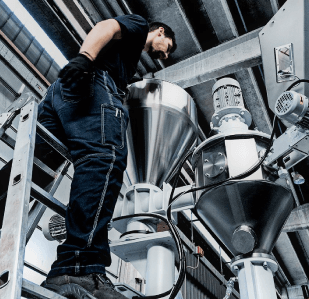Brief summary
PET is one of the most commonly used plastics in consumer products and is found in most water and pop bottles, and some packaging. It is intended for single-use applications; repeated use increases the risk of leaching and bacterial growth. PET plastic is difficult to decontaminate and proper cleaning requires harmful chemicals. Polyethylene terephthalates may leach carcinogens. Therefore, is it better to recycle PET or not?
PET Recycling: Should it be Used in Making New Bottles?
PET plastic is recyclable and about 25% of PET bottles in the US today are recycled. The plastic is crushed and then shredded into small flakes, which are then reprocessed to make new PET bottles or spun into polyester fiber. This recycled fiber is used to make textiles such as fleece garments, carpets, stuffing for pillows and life jackets, and similar products. Products made of PET plastic should be recycled but not reused.
Many recycling advocates are urging plastic bottle makers to use more recycled PET content. But will a rush to do so adversely affect the PET recycling market?
Two essays that originally appeared in a State of Minnesota Office of Environmental Assistance newsletter offer contrary answers to that question.
The Case Against More Recycled PET in Containers
Joan Archer, President, Minnesota Soft Drink Association.
Polyethylene terephthalate (PET) bottles don’t need to be recycled back into PET bottles. Market forces that affect the value of recycled PET are diverse. They include, but are not limited to:
- the cost of competing raw materials and virgin resin;
- the availability and value of off-spec resin;
- the quality, quantity and yield of the material collected;
- costs associated with collection, transportation, sorting, cleaning and washing;
- a diversity of end uses.
A proclamation that soft drink PET containers should be recycled back into their original use is a philosophical point of view—one that to date has not been supported by data showing superior environmental benefit or improved economics of plastic recycling.
The Case For More Recycled PET in Containers
Anne Morse, Solid Waste Officer, Winona County, Minnesota.
Yes, we should be using recycled PET in bottle applications. Although it may not be obvious to all, there’s been a sea change in the world of waste.
I’m referring to the understanding that there must and will be shared responsibility for evolving solutions by all those involved in creating what we’ve historically called “waste.” This means that manufacturers, retailers, consumers, recyclers and haulers will have a hand in the evolution and implementation of practices that maximize the value of our natural resources.
While some remain skeptical of this concept of stewardship, the skeptics are swimming against not just a current, but a wave of public sentiment. Stewardship of our resources is the future and the reuse of plastics in their highest possible applications is key.
The message is this: our commitment to recycle whatever consumer packaging hits the marketplace has come to an end. The responsibility for making recycling work efficiently is today a shared one. Let’s all rise to the occasion.
Credits: recyclingtoday.com



_5f105c8b8f32c.jpeg)

.jpeg)
.jpeg)